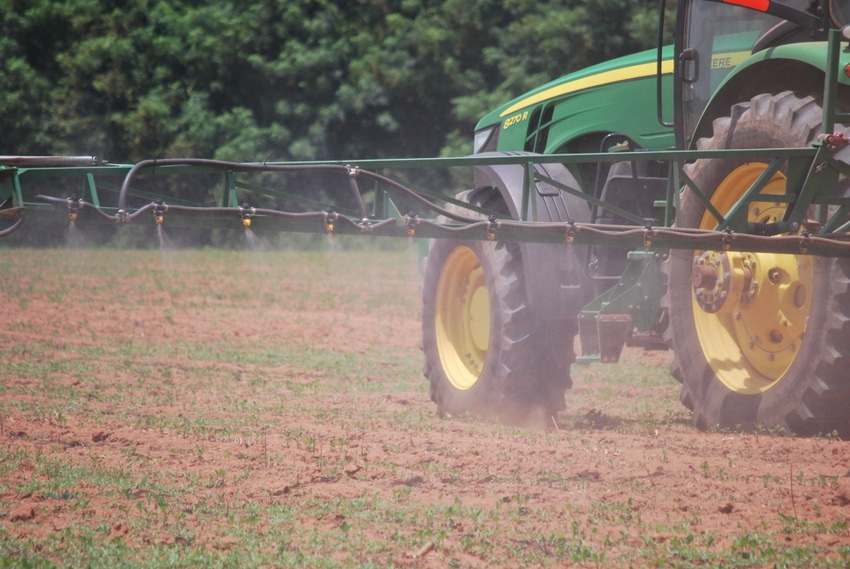
Rick Keigwin knows some soybean and cotton farmers like the new dicamba herbicides now available to manage weeds. But as an EPA director, Keigwin says the technology must be better managed in 2018.
Keigwin is the director of the EPA Office of Pesticide Programs, the top dog on pesticide registrations and regulations in the country. He spoke at the Southeast Fruit and Vegetable Growers Conference earlier this month in Savannah.
EPA will make a decision this fall on whether to continue to allow over-the-top, in-season use of the most-recently registered dicamba formulations beyond the 2018 growing season. Could the decision to renew the registrations be made on a state-by-state basis?
“Anything is on the table right now. I don’t want to take anything off the table. We need to see how this new label (for the 2018 season) is working. One of the things that we did hear from the growers who used the technology legally in combination with the (seed) trait was they saw amazing weed control. So, we are well aware of those benefits, and we need to be mindful of that. We also need to be mindful of those growers that were unintentionally harmed by the use of that product,” Keigwin said.
Monsanto, BASF and DuPont offer dicamba formulations which became legal to spray in 2017 on cotton and soybean seed traits resistant to the herbicides. The formulations received two-year registrations. This fall, EPA will determine a new safety finding for the herbicides and make a decision on whether to reregister the products for 2019.
In May and June of 2017, extensive reports of significant dicamba-related damage to soybeans in season due to off-field movement of the herbicides drew negative attention to the new technology. Early complaints were reported in Missouri. As the season progressed, the damage and complaints spread to Tennessee and moved north into the Midwest and the Dakotas.
Based on investigations, Keigwin said, the factors that led to damage and complaints were:
Physical drift or movement off the field
Tank contamination with dicamba residue not completely cleaned out
Temperature inversions
Volatility
Misuse where a grower didn’t use the registered product for over-the-top application
In response to the complaints, the resulting damage and because of the importance of the new technology to some growers, EPA has intervened, and in cooperation with the registrants of the herbicides made changes to the herbicides’ labels for the 2018 season in an effort “to make the 2018 season better than the 2017 season,” he said.
The new dicamba products are now classified as restricted-use pesticides and require specific training to apply. Keigwin said EPA wanted this for a few reasons.
“One, we wanted to incentivize the training programs that happened, particularly the training that was done in Georgia and other areas of the country (such as in North Carolina and Alabama). There seemed to be a correlation between really well-provided training and low incidents (of in-season dicamba complaints),” he said, adding that the label changes require applicators to maintain specific records regarding the use of the products in 2018.
Label changes in addition to the required training and recordkeeping include:
Limiting application to when maximum wind speeds are below 10 mph.
Application can only take place between sunrise and sunset.
Tank clean-out language to prevent cross contamination.
Identifying dicamba-sensitive or -susceptible crops and maintaining records of where those crops are in relation to a dicamba application.
“Some of the growers that we spoke to said they were really confused by the (2017) labels. So what we tried to do was reorganize the labels so that it was a little bit easier to follow,” he said, adding that maintaining records as the label requires gives growers a tool (or checklist) that shows things were done correctly to get the best application accomplished.
Once agreement was reached on changes to the labels, he said the registrants were extremely cooperative and proactive in getting the 2017 products out of the channels of trade and relabeled with the revised labels so growers have the right information in hand for the 2018 season.
As the 2018 season progresses, EPA will be watching closely how well the new labels work and how well growers handle dicamba. The agency wants to make an informed decision this fall and has in place (and continues to refine) a network of cooperation between land-grant institutions, weed specialists, state departments of agriculture and industry to help it determine whether dicamba stays or goes.
Keigwin said the agency will decide whether to renew the dicamba registrations in time for growers to plan accordingly for the 2019 season.
About the Author(s)
You May Also Like






